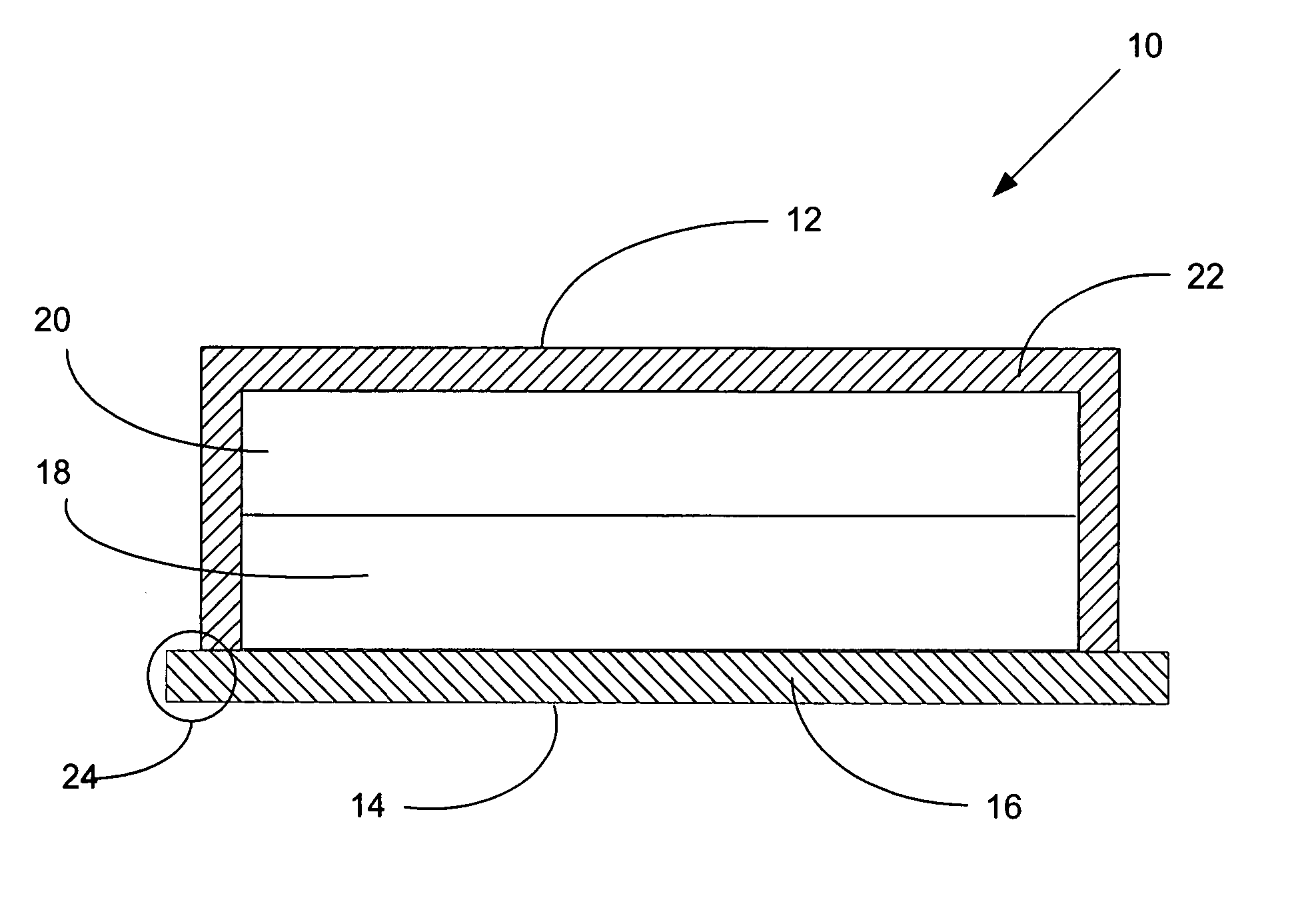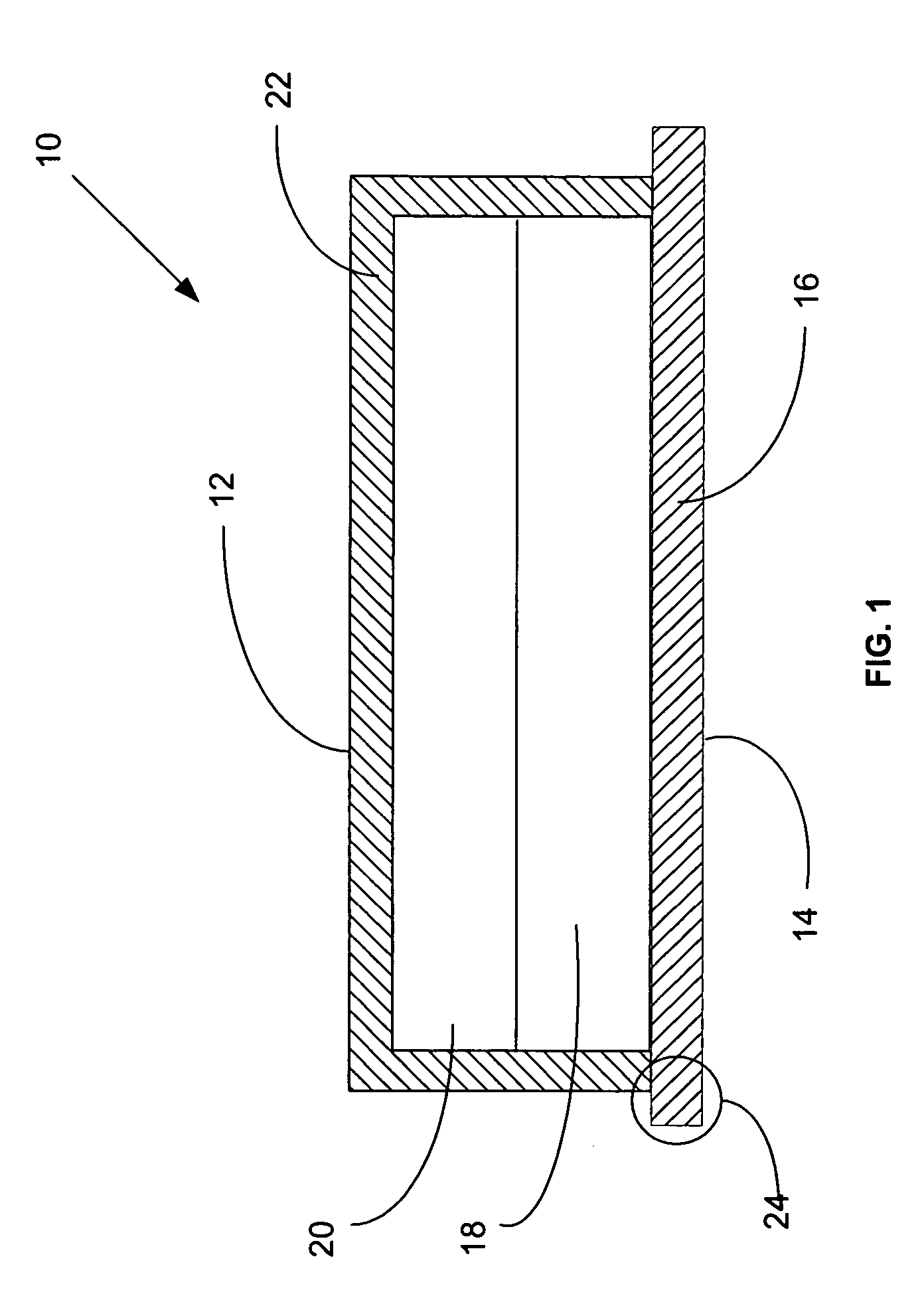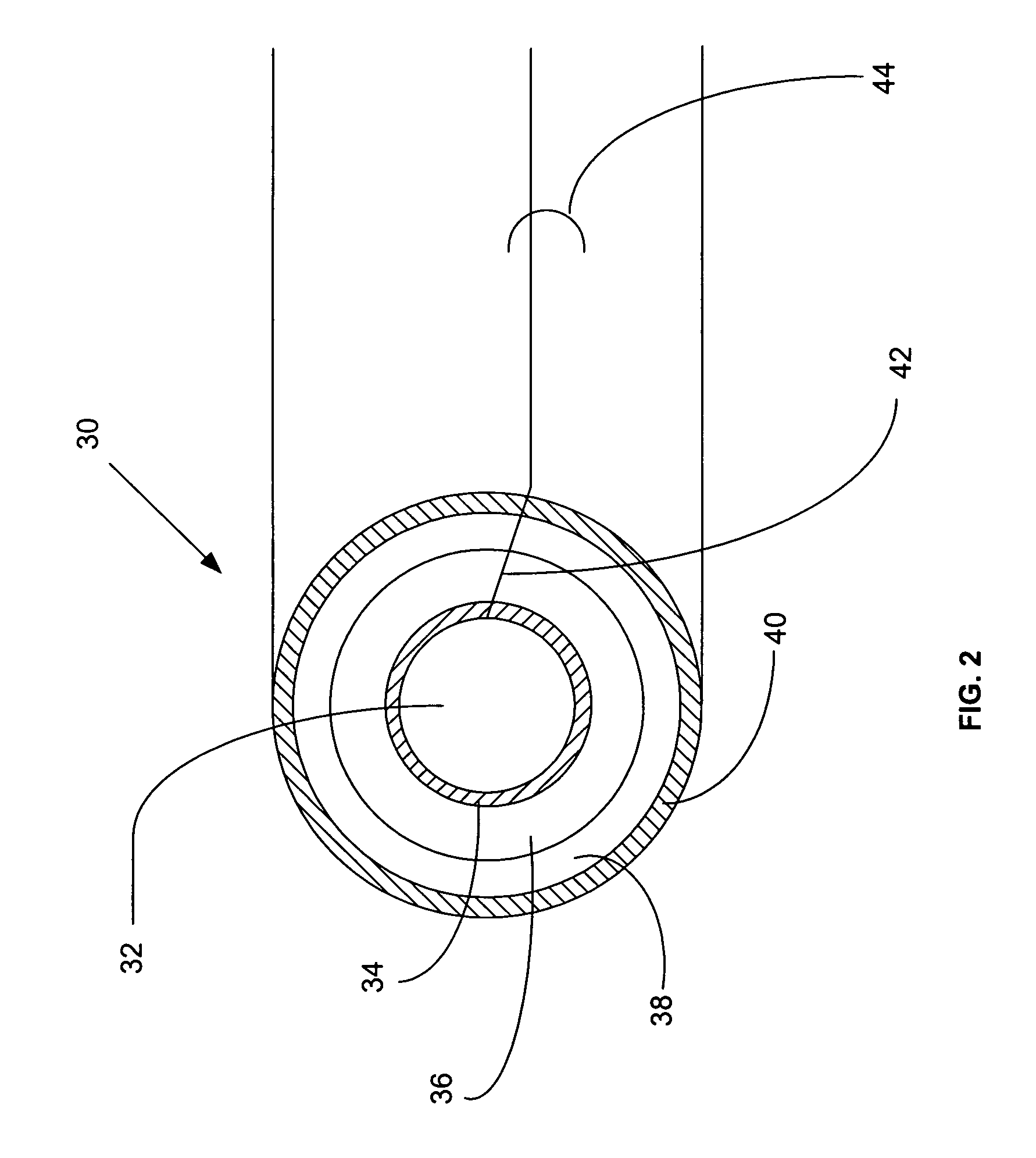Thermal blanket including a radiation layer
- Summary
- Abstract
- Description
- Claims
- Application Information
AI Technical Summary
Benefits of technology
Problems solved by technology
Method used
Image
Examples
Embodiment Construction
[0026] As seen in FIG. 1, the thermal insulation blanket 10 of the present invention comprises a two-sided blanket 10 having a “bottom side”14 placed adjacent the heat source to be insulated and a “top side”12 adjacent the environment to be thermally protected. FIG. 1 shows an exemplary 4-layer thermal blanket 10 as preferably made of a heat-resistant, flexible metallic woven or knit mesh layer 16 which is finished as a reflective barrier against radiant heat. Next adjacent to metallic layer 16 is a conventional primary insulation layer 18 comprising silica, or silicon dioxide, a compound of two elements in the earth's crust, silicon and oxygen, SiO2,occurring in crystalline, amorphous, and impure forms. Next adjacent to the primary insulation layer 18 is a radiation barrier layer 20 comprising a non-woven carbon cloth layer. Carbon fiber woven and non-woven fabrics are know to be made by entangling short fibers as opposed to weaving long fibers or yarns of carbon. Next adjacent to ...
PUM
| Property | Measurement | Unit |
|---|---|---|
| Thickness | aaaaa | aaaaa |
| Weight | aaaaa | aaaaa |
| Thermal conductivity | aaaaa | aaaaa |
Abstract
Description
Claims
Application Information
 Login to View More
Login to View More - R&D
- Intellectual Property
- Life Sciences
- Materials
- Tech Scout
- Unparalleled Data Quality
- Higher Quality Content
- 60% Fewer Hallucinations
Browse by: Latest US Patents, China's latest patents, Technical Efficacy Thesaurus, Application Domain, Technology Topic, Popular Technical Reports.
© 2025 PatSnap. All rights reserved.Legal|Privacy policy|Modern Slavery Act Transparency Statement|Sitemap|About US| Contact US: help@patsnap.com



